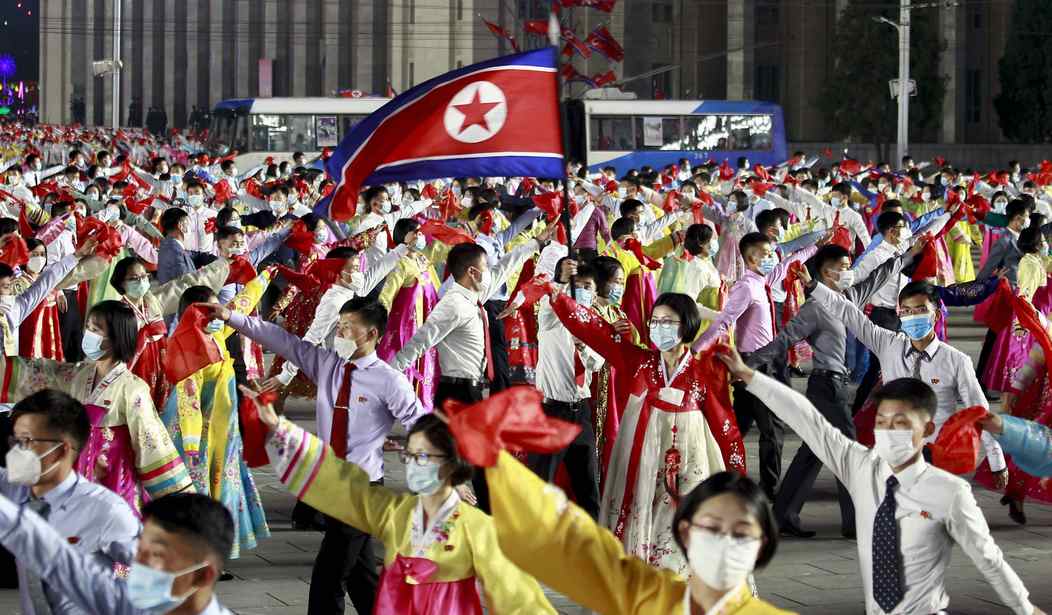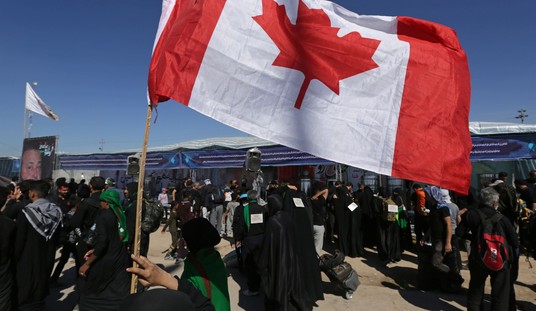It’s a given that North Korea is one of the worst places on the planet. Even under the best of circumstances, people there live under a completely totalitarian state where any sign of disagreement with the government or even engagement with the outside world can be harshly punished. Some are sent to a network of camps from which most people never emerge. It’s also a given that people in North Korea are constantly hungry and usually don’t have enough to eat.
In the past there have been famines, including one in the early 90s which became known as the “arduous march.” The immediate cause of the arduous march was flooding. The was rain which hadn’t been seen in at least 70 years and it not only wiped out crops but also destroyed more than million tons of stored grain which had been kept underground.
But one chronicler of the famine, a USAID Administrator named Andrew S. Natsios, published a book which argued the ultimate cause of the disaster was North Korea’s communist economy.
Natsios said that an annual FAO crop assessment determined that the North Korean famine was largely caused by the country’s Stalinist economic system—not by flooding, as the government still maintains. “North Korean and Cuba are the world’s only Stalinist agricultural systems, where there is no incentive to produce food,” said Natsios. “The production of food actually went into reverse during the famine.” In addition, Russia and China had stopped sending heavily-subsidized food supplies and oil to North Korea after the end of the Cold War.
And short-term government decisions, Natsios argued, exacerbated that disaster. In 1995, the regime “triaged” the entire northeast region of the country—in essence, blocking food shipments to that portion of the population in order to ensure subsistence food supplies for the capital Pyongyang, whose support was critical to the government. “No food deliveries were made to that region for 2 ½ years,” said Natsios. Workers in “unessential industries” such as mining were also triaged.
The turning point in the regime’s domestic credibility, Natsios argued, was when it cut rations to farmers. “Since the prices the PDS [the public distribution system] paid farmers for food was extremely low,” said Natsios, “the system collapsed when farmers began hoarding food.”
In 2014, the Guardian published a first hand account by a survivor of the famine who managed to escape North Korea.
At a time when a kernel of corn seemed more valuable than gold, I think the biggest victims were the little kids in North Korea.
In my hometown, there was a little girl named Soon Yi. I often saw her drawing something with a broken branch on the ground, waiting for her dad, who was out to find something to feed her. Because she was four-years-old, the same age as my own little sister then, I was a bit attached to her. Then, one day, I woke up and heard the sad news that she had died. Her mother passed away when she was still a baby and her father was the only one who could find something to feed her. However, at that time, it was not easy to find food.
The number of deaths caused by the arduous march is unknown. Officially it was around a quarter million people but Natsios suggests the true number is in a range closer to 3 million, which would be something like 15% of the population.
All of that history is relevant because recently a BBC correspondent in Seoul, South Korea spent several months communicating secretly with three people in North Korea. All three suggested that current conditions in the country are desperate with people starving to death in the streets and in their homes.
The interviews reveal a “devastating tragedy is unfolding” in the country, said Sokeel Park from Liberty in North Korea (LiNK), which supports North Korean escapees.
One woman living in the capital Pyongyang told us she knew a family of three who had starved to death at home. “We knocked on their door to give them water, but nobody answered,” Ji Yeon said. When the authorities went inside, they found them dead, she said…
From Pyongyang, Ji Yeon told us she had heard of people who had killed themselves at home or disappeared into the mountains to die, because they could no longer make a living.
She was struggling to feed her children, she said. Once, she went two days without eating and thought she was going to die in her sleep.
This time the immediate problem isn’t flooding, but the government’s insistence on cutting the country off from the outside world. Prior to the pandemic, people in the north survived by crossing the border into China and bring back food and medicine which could be sold in North Korea. But during the pandemic, the North Korean government cracked down even further on citizens’ freedoms. Watching foreign media is now a crime. A fence was put up along the border with China. Anyone who even approaches the border is arrested.
Here’s the BBC’s full report. Because no reporters with cameras could get in to the country, the secret interviews are illustrated with simple animations. You definitely get the idea that the country is on the verge of another arduous march, a situation where the death toll from starvation could climb dramatically. And along with this misery there is major unhappiness with the communist government and the way things are run. People are sick of Kim Jong Un, they just don’t dare to say it out loud.








Join the conversation as a VIP Member